Abstract
Myocardial cell pH has been measured with 5,5-dimethyl-2,4-oxazolidinedione (DMO) in intact anesthetized dogs by a transient indicator dilution technique. Bolus injections of labeled DMO, vascular, extracellular, and water indicators were made into the anterior descending coronary artery, and blood samples were collected from the great cardiac vein. The steady-state distribution of DMO between cells and plasma was calculated from the indicator mean transit times, and the plasma pH. Myocardial cell pH was determined from the distribution value and plasma pH. Normal myocardial cell pH averaged 6.94. Changes in myocardial cell pH after infusions of acid or alkali. Myocardial ischemia induced by inflation of a coronary artery balloon resulted in progressive decreases in cellular pH to average values of 6.83 within the initial 15 min and to 6.59 within the interval between 20 and 70 min. Infusions of Na2CO3 tended to diminish intracellular acidosis although these infusions had little effect on the difference in pH between the myocardial cell and extracellular fluid.
Full text
PDF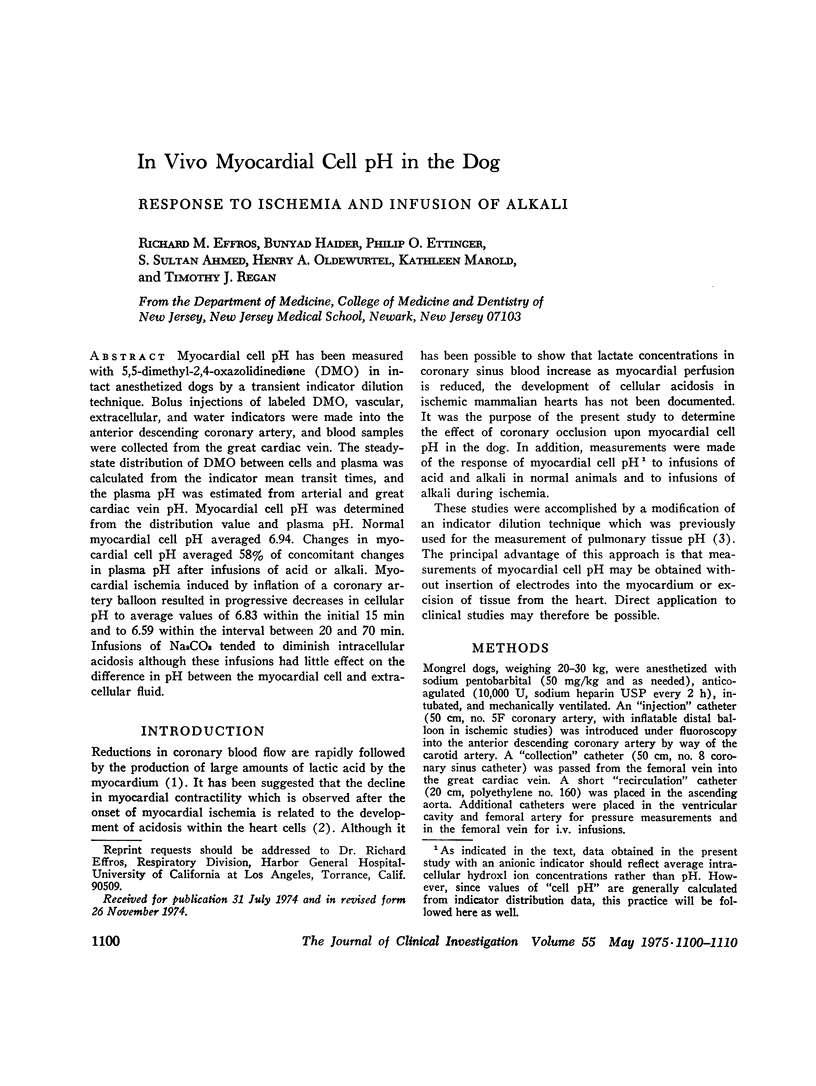
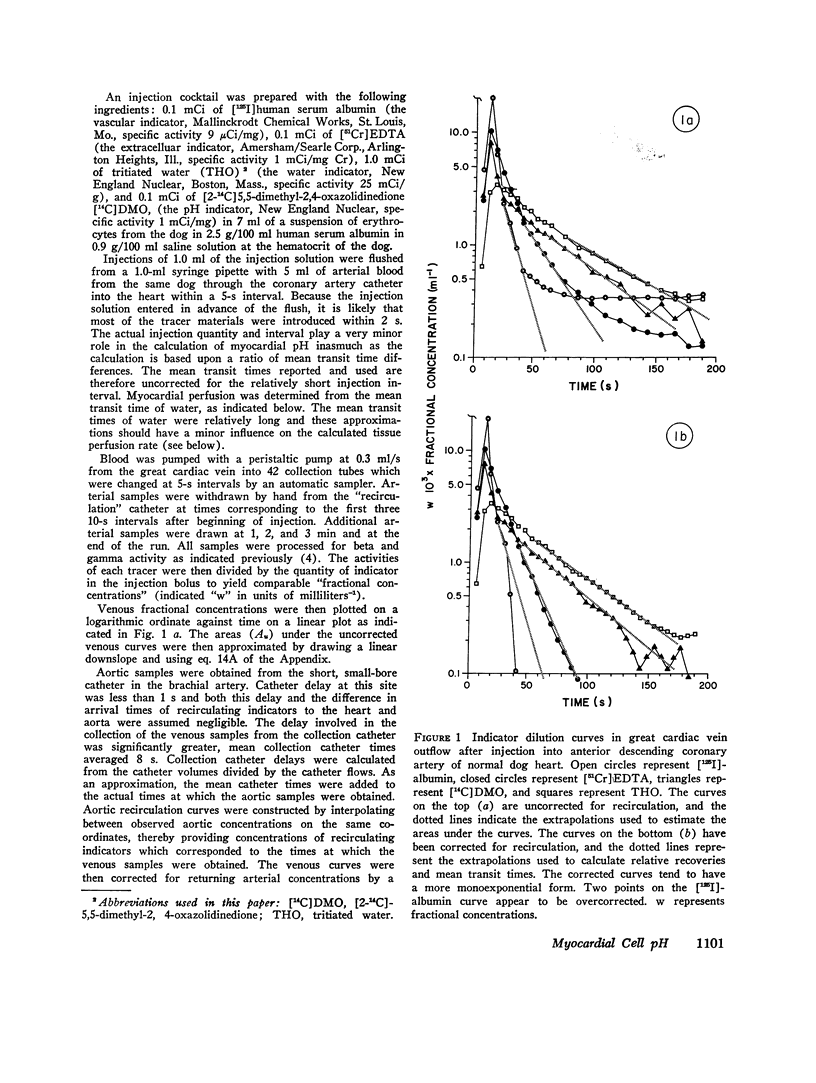
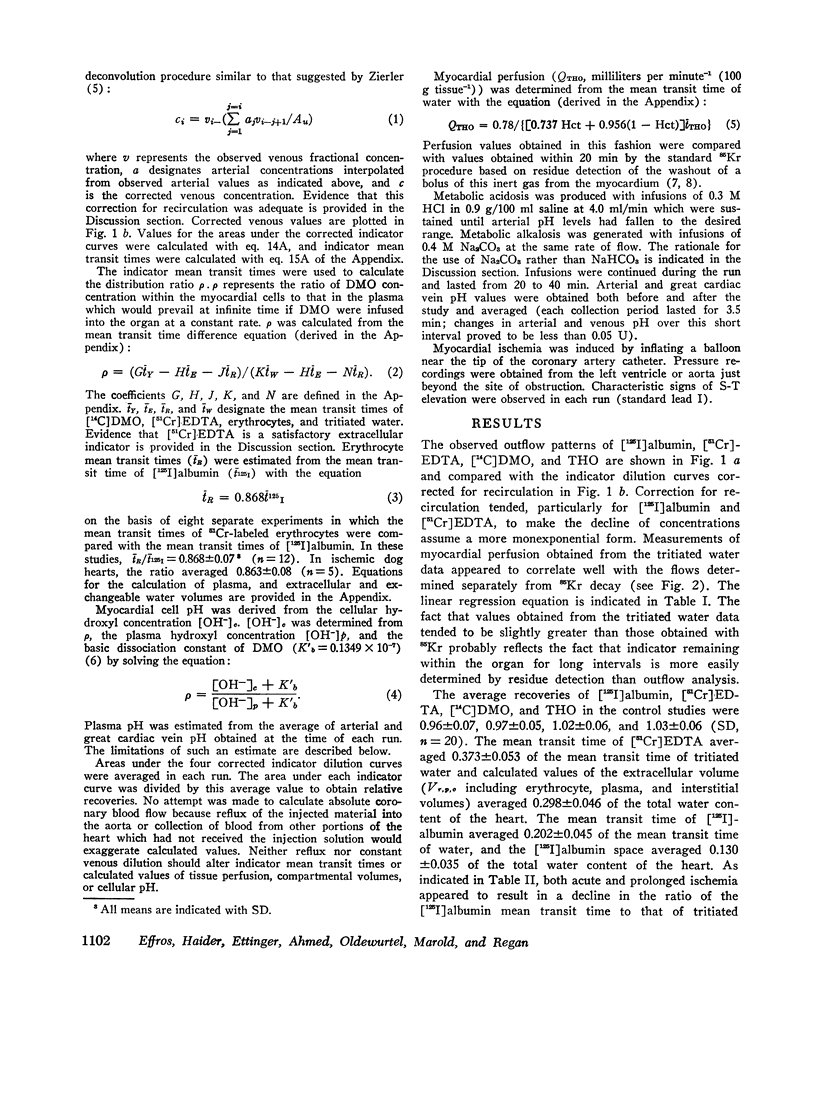
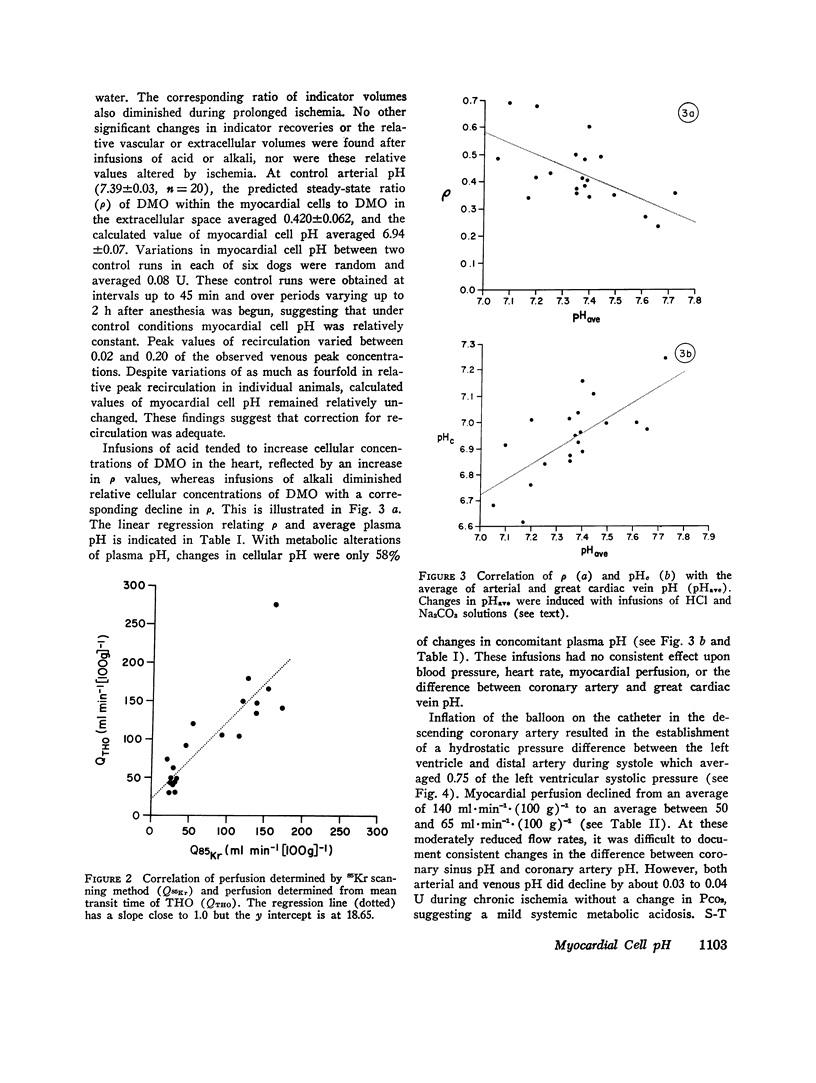
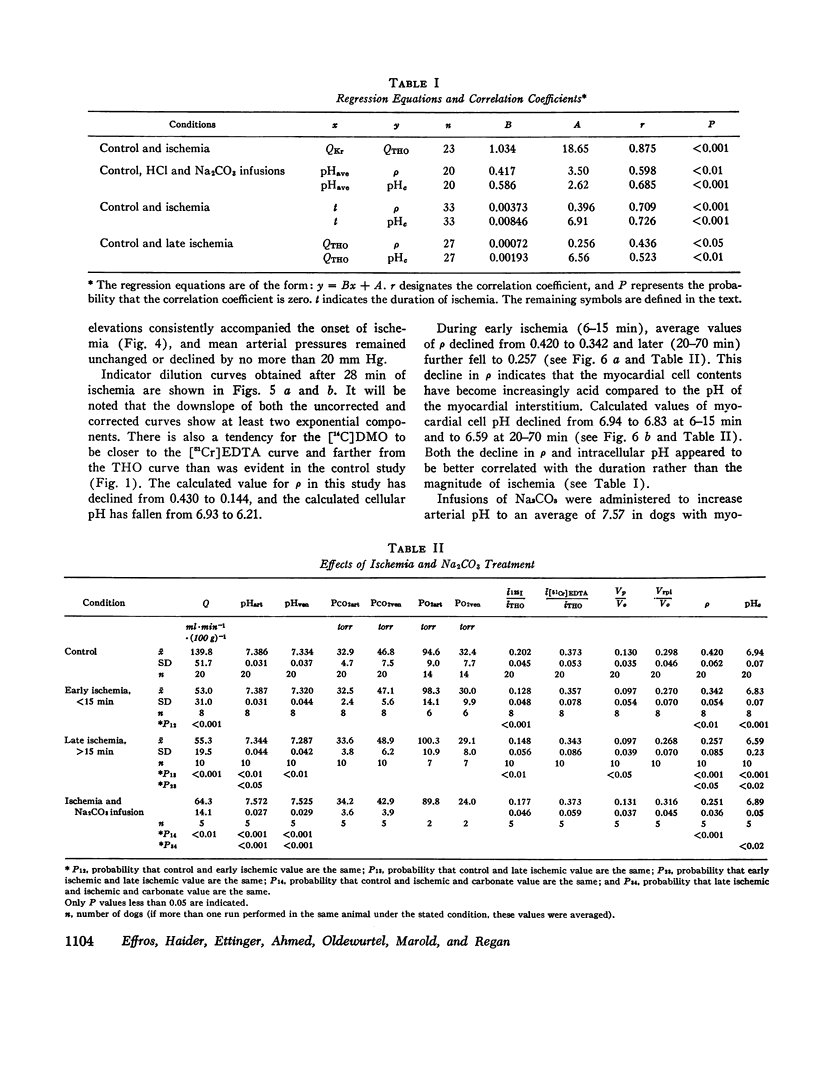
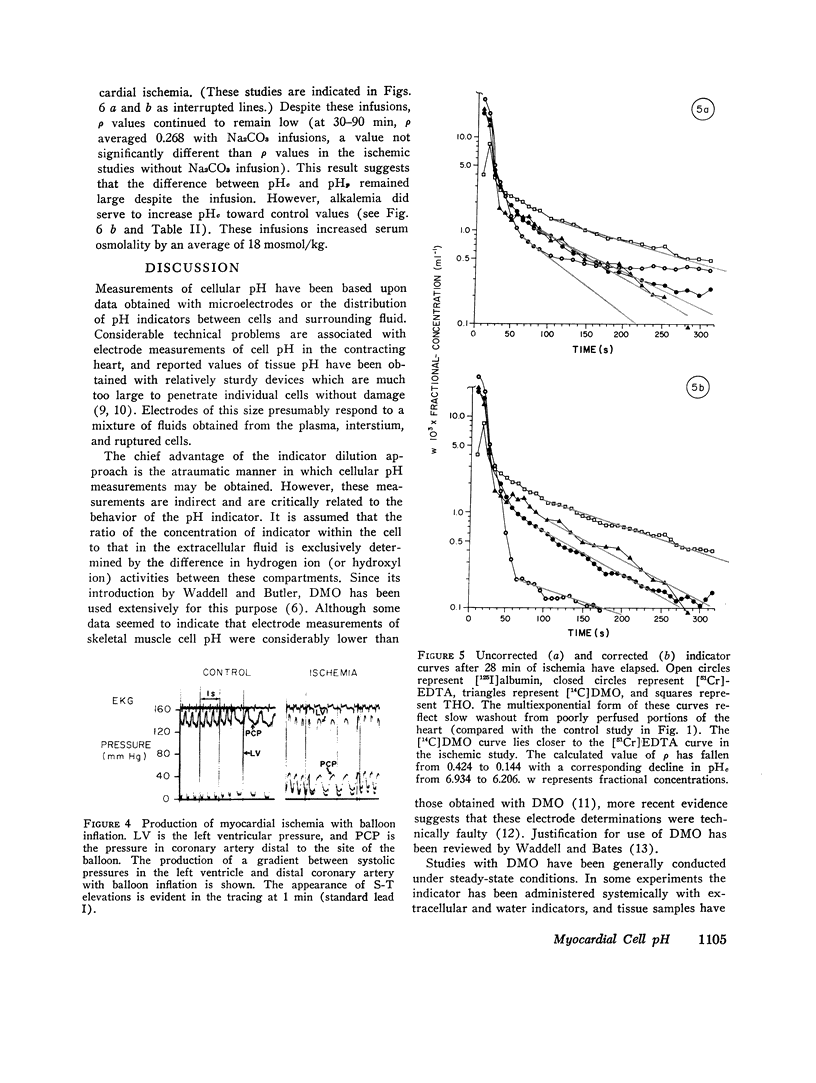
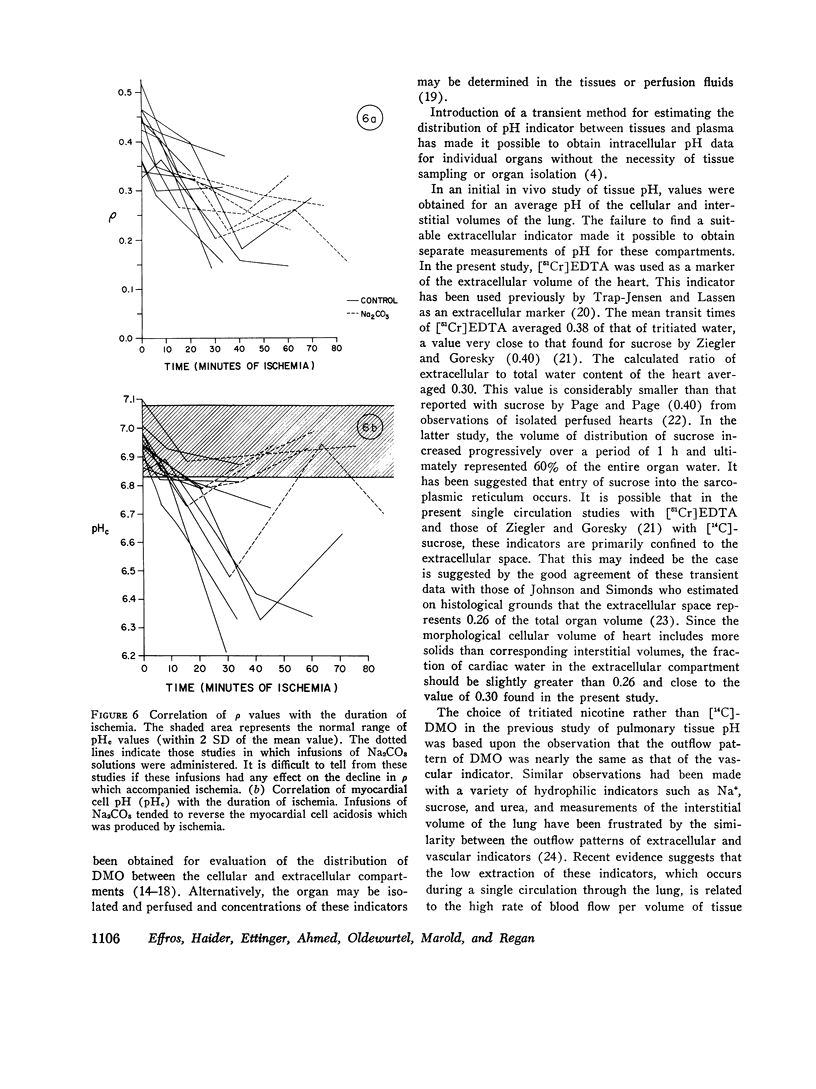
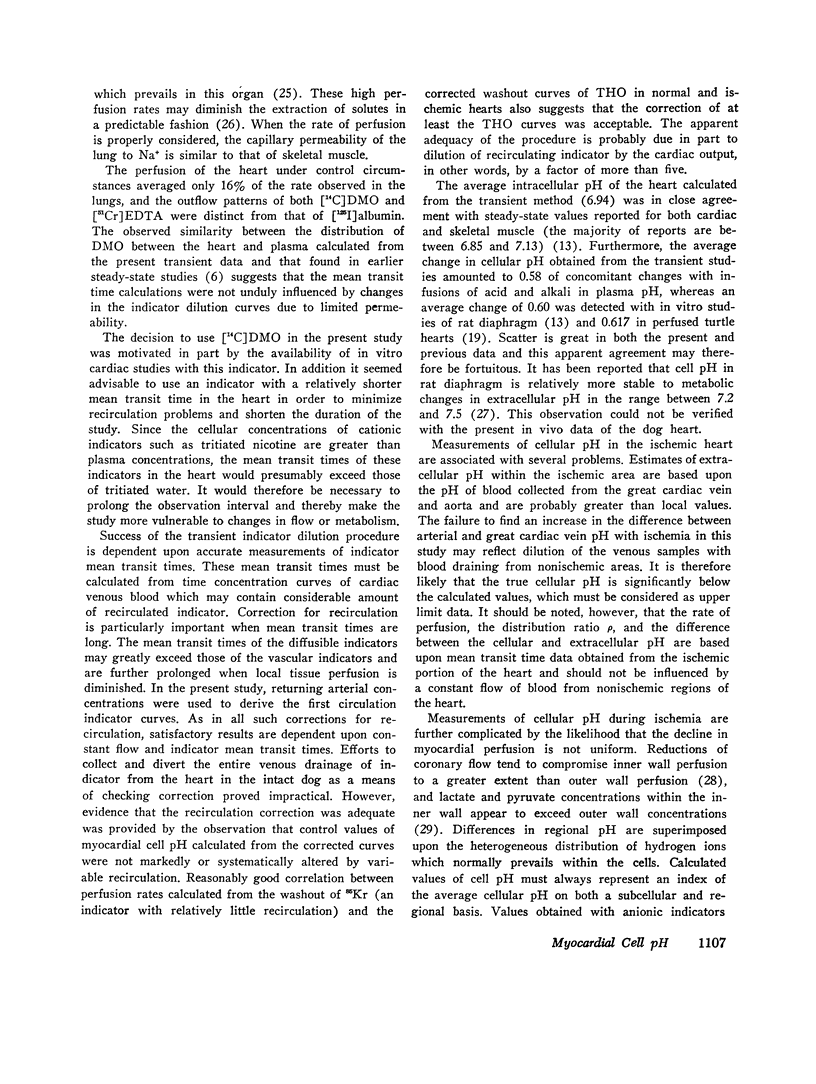

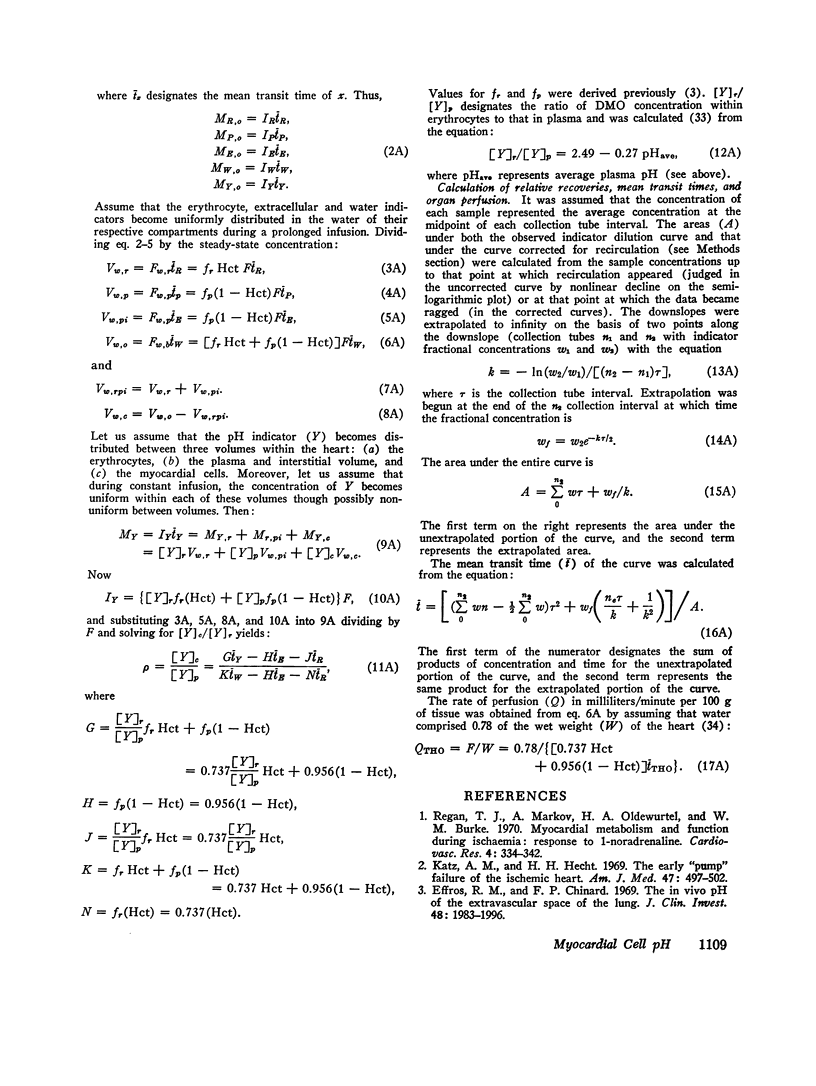
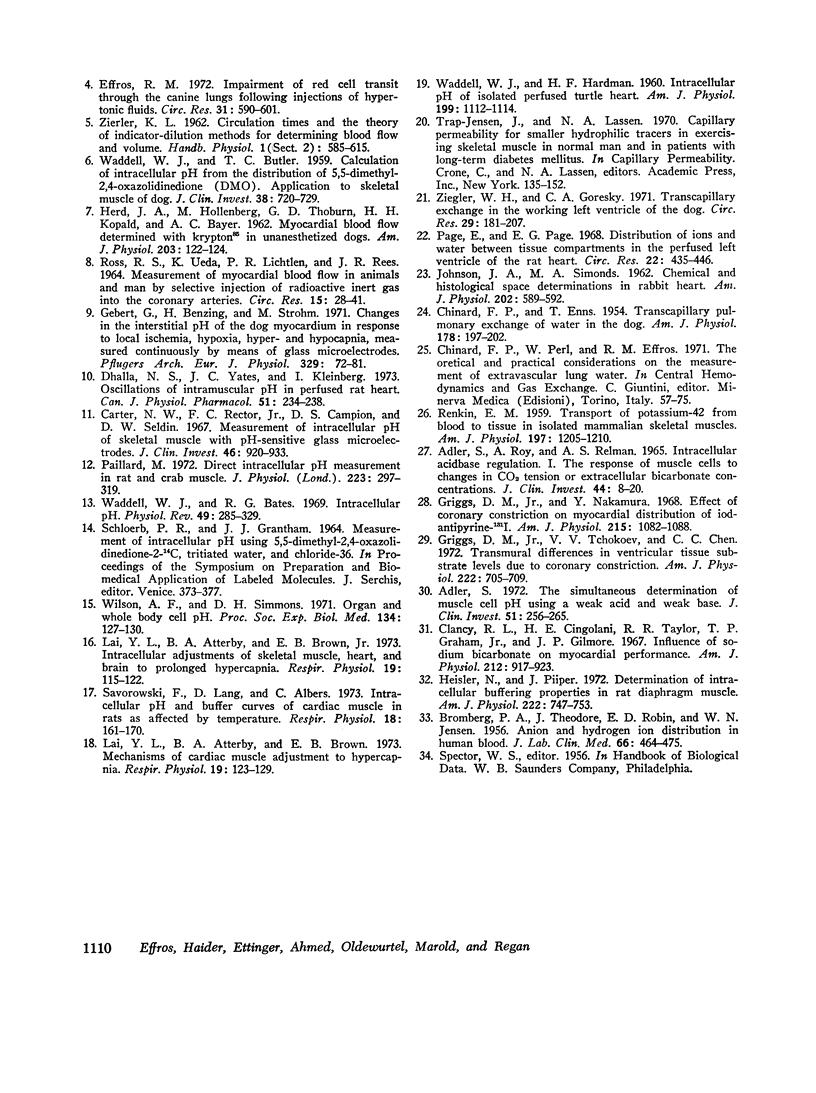
Images in this article
Selected References
These references are in PubMed. This may not be the complete list of references from this article.
- ADLER S., ROY A., RELMAN A. S. INTRACELLULAR ACID-BASE REGULATION. I. THE RESPONSE OF MUSCLE CELLS TO CHANGES IN CO2 TENSION OR EXTRACELLULAR BICARBONATE CONCENTRATION. J Clin Invest. 1965 Jan;44:8–20. doi: 10.1172/JCI105129. [DOI] [PMC free article] [PubMed] [Google Scholar]
- Adler S. The simultaneous determination of muscle cell pH using a weak acid and weak base. J Clin Invest. 1972 Feb;51(2):256–265. doi: 10.1172/JCI106810. [DOI] [PMC free article] [PubMed] [Google Scholar]
- Bromberg P. A., Theodore J., Robin E. D., Jensen W. N. Anion and hydrogen ion distribution in human blood. J Lab Clin Med. 1965 Sep;66(3):464–475. [PubMed] [Google Scholar]
- CHINARD F. P., ENNS T. Transcapillary pulmonary exchange of water in the dog. Am J Physiol. 1954 Aug;178(2):197–202. doi: 10.1152/ajplegacy.1954.178.2.197. [DOI] [PubMed] [Google Scholar]
- Carter N. W., Rector F. C., Jr, Campion D. S., Seldin D. W. Measurement of intracellular pH of skeletal muscle with pH-sensitive glass microelectrodes. J Clin Invest. 1967 Jun;46(6):920–933. doi: 10.1172/JCI105598. [DOI] [PMC free article] [PubMed] [Google Scholar]
- Clancy R. L., Cingolani H. E., Taylor R. R., Graham T. P., Jr, Gilmore J. P. Influence of sodium bicarbonate on myocardial performance. Am J Physiol. 1967 Apr;212(4):917–923. doi: 10.1152/ajplegacy.1967.212.4.917. [DOI] [PubMed] [Google Scholar]
- Dhalla N. S., Yates J. C., Kleinberg I. Oscillations of intramuscular pH in perfused rat heart. Can J Physiol Pharmacol. 1973 Mar;51(3):234–238. doi: 10.1139/y73-035. [DOI] [PubMed] [Google Scholar]
- Effros R. M., Chinard F. P. The in vivo pH of the extravascular space of the lung. J Clin Invest. 1969 Nov;48(11):1983–1996. doi: 10.1172/JCI106164. [DOI] [PMC free article] [PubMed] [Google Scholar]
- Effros R. M. Impairment of red cell transit through the canine lungs following injections of hypertonic fluids. Circ Res. 1972 Oct;31(4):590–601. doi: 10.1161/01.res.31.4.590. [DOI] [PubMed] [Google Scholar]
- Gebert G., Benzing H., Strohm M. Changes in the interstitial pH of dog myocardium in response to local ischemia, hypoxia, hyper- and hypocapnia, measured continuously by means of glass microelectrodes. Pflugers Arch. 1971;329(1):72–81. doi: 10.1007/BF00586901. [DOI] [PubMed] [Google Scholar]
- Griggs D. M., Jr, Nakamura Y. Effect of coronary constriction on myocardial distribution of iodoantipyrine-131-I. Am J Physiol. 1968 Nov;215(5):1082–1086. doi: 10.1152/ajplegacy.1968.215.5.1082. [DOI] [PubMed] [Google Scholar]
- Griggs D. M., Jr, Tchokoev V. V., Chen C. C. Transmural differences in ventricular tissue substrate levels due to coronary constriction. Am J Physiol. 1972 Mar;222(3):705–709. doi: 10.1152/ajplegacy.1972.222.3.705. [DOI] [PubMed] [Google Scholar]
- HERD J. A., HOLLENBERG M., THORBURN G. D., KOPALD H. H., BARGER A. C. Myocardial blood flow determined with krypton 85 in unanesthetized dogs. Am J Physiol. 1962 Jul;203:122–124. doi: 10.1152/ajplegacy.1962.203.1.122. [DOI] [PubMed] [Google Scholar]
- Heisler N., Piiper J. Determination of intracellular buffering properties in rat diaphragm muscle. Am J Physiol. 1972 Mar;222(3):747–753. doi: 10.1152/ajplegacy.1972.222.3.747. [DOI] [PubMed] [Google Scholar]
- JOHNSON J. A., SIMONDS M. A. Chemical and histological space determinations in rabbit heart. Am J Physiol. 1962 Mar;202:589–592. doi: 10.1152/ajplegacy.1962.202.3.589. [DOI] [PubMed] [Google Scholar]
- Katz A. M., Hecht H. H. Editorial: the early "pump" failure of the ischemic heart. Am J Med. 1969 Oct;47(4):497–502. doi: 10.1016/0002-9343(69)90180-6. [DOI] [PubMed] [Google Scholar]
- Lai Y. L., Attebery B. A., Brown E. B., Jr Intracellular adjustments of skeletal muscle, heart, and brain to prolonged hypercapnia. Respir Physiol. 1973 Nov;19(2):115–122. doi: 10.1016/0034-5687(73)90070-4. [DOI] [PubMed] [Google Scholar]
- Lai Y. L., Attebery B. A., Brown E. B., Jr Mechanisms of cardiac muscle adjustment to hypercapnia. Respir Physiol. 1973 Nov;19(2):123–129. doi: 10.1016/0034-5687(73)90071-6. [DOI] [PubMed] [Google Scholar]
- Page E., Page E. G. Distribution of ions and water between tissue compartments in the perfused left ventricle of the rat heart. Circ Res. 1968 Mar;22(3):435–446. doi: 10.1161/01.res.22.3.435. [DOI] [PubMed] [Google Scholar]
- Paillard M. Direct intracellular pH measurement in rat and crab muscle. J Physiol. 1972 Jun;223(2):297–319. doi: 10.1113/jphysiol.1972.sp009848. [DOI] [PMC free article] [PubMed] [Google Scholar]
- RENKIN E. M. Transport of potassium-42 from blood to tissue in isolated mammalian skeletal muscles. Am J Physiol. 1959 Dec;197:1205–1210. doi: 10.1152/ajplegacy.1959.197.6.1205. [DOI] [PubMed] [Google Scholar]
- ROSS R. S., UEDA K., LICHTLEN P. R., REES J. R. MEASUREMENT OF MYOCARDIAL BLOOD FLOW IN ANIMALS AND MAN BY SELECTIVE INJECTION OF RADIOACTIVE INERT GAS INTO THE CORONARY ARTERIES. Circ Res. 1964 Jul;15:28–41. doi: 10.1161/01.res.15.1.28. [DOI] [PubMed] [Google Scholar]
- Regan T. J., Markov A., Oldewurtel H. A., Burke W. M. Myocardial metabolism and function during ischaemia: response to 1-noradrenaline. Cardiovasc Res. 1970 Jul;4(3):334–342. doi: 10.1093/cvr/4.3.334. [DOI] [PubMed] [Google Scholar]
- Saborowski F., Lang D., Albers C. Intracellular pH and buffer curves of cardiac muscle in rats as affected by temperature. Respir Physiol. 1973 Jul;18(2):161–170. doi: 10.1016/0034-5687(73)90046-7. [DOI] [PubMed] [Google Scholar]
- WADDELL W. J., BUTLER T. C. Calculation of intracellular pH from the distribution of 5,5-dimethyl-2,4-oxazolidinedione (DMO); application to skeletal muscle of the dog. J Clin Invest. 1959 May;38(5):720–729. doi: 10.1172/JCI103852. [DOI] [PMC free article] [PubMed] [Google Scholar]
- WADDELL W. J., HARDMAN H. F. Intracellular pH of isolated perfused turtle heart. Am J Physiol. 1960 Dec;199:1112–1114. doi: 10.1152/ajplegacy.1960.199.6.1112. [DOI] [PubMed] [Google Scholar]
- Waddell W. J., Bates R. G. Intracellular pH. Physiol Rev. 1969 Apr;49(2):285–329. doi: 10.1152/physrev.1969.49.2.285. [DOI] [PubMed] [Google Scholar]
- Wilson A. F., Simmons D. H. Organ and whole body cell pH. Proc Soc Exp Biol Med. 1970 May;134(1):127–130. doi: 10.3181/00379727-134-34743. [DOI] [PubMed] [Google Scholar]
- Ziegler W. H., Goresky C. A. Transcapillary exchange in the working left ventricle of the dog. Circ Res. 1971 Aug;29(2):181–207. doi: 10.1161/01.res.29.2.181. [DOI] [PubMed] [Google Scholar]



